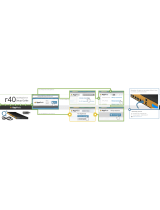
1
CONTENTS
Chapter 1 Introduction ...................................................................................................................................... 3
1.1 Overview of the EAP ........................................................................................................................... 3
1.2 Hardware Overview ............................................................................................................................ 3
1.2.1 LED ................................................................................................................................................... 3
1.2.2 Interface Panel ............................................................................................................................. 4
1.2.3 Mounting Bracket ....................................................................................................................... 6
Chapter 2 Network Topology .......................................................................................................................... 7
Chapter 3 Management Mode ........................................................................................................................ 8
3.1 Standalone Mode ................................................................................................................................. 8
3.2 Managed Mode .................................................................................................................................... 8
3.3 Switch to Standalone Mode ............................................................................................................. 8
Chapter 4 Network ........................................................................................................................................... 10
Chapter 5 Wireless ............................................................................................................................................ 11
5.1 Wireless Settings ............................................................................................................................... 12
5.1.1 Wireless Basic Settings .......................................................................................................... 13
5.1.2 SSIDs ............................................................................................................................................. 14
5.1.3 Wireless Advanced Settings ................................................................................................ 18
5.1.4 Load Balance ............................................................................................................................. 19
5.2 Portal ...................................................................................................................................................... 19
5.2.1 Portal Configuration ............................................................................................................... 20
5.2.2 Free Authentication Policy ................................................................................................... 25
5.3 MAC Filtering ...................................................................................................................................... 27
5.4 Scheduler ............................................................................................................................................. 29
5.5 QoS ......................................................................................................................................................... 33
5.5.1 AP EDCA Parameters .............................................................................................................. 34
5.5.2 Station EDCA Parameters ..................................................................................................... 35
5.6 Rogue AP Detection ......................................................................................................................... 36
5.6.1 Settings ....................................................................................................................................... 37
5.6.2 Detected Rogue AP List ........................................................................................................ 37
5.6.3 Trusted AP List .......................................................................................................................... 38





















